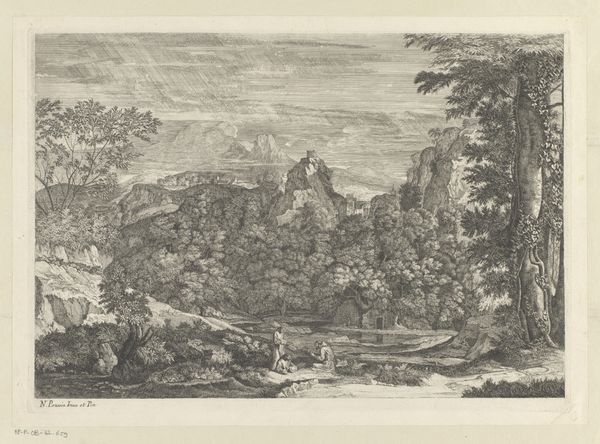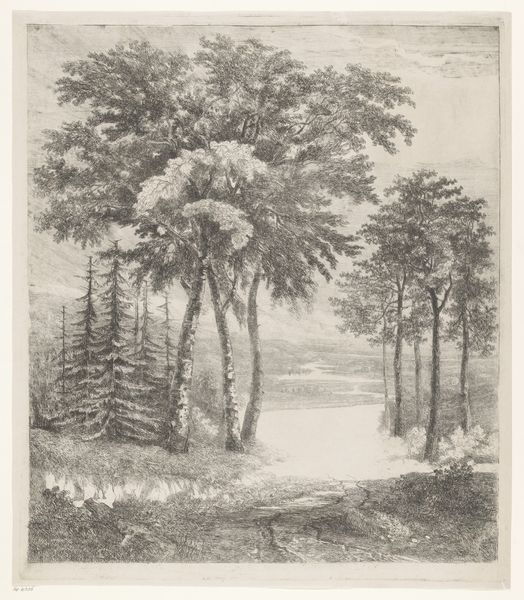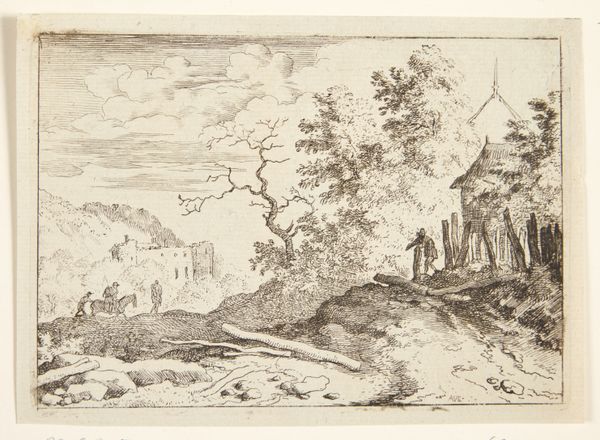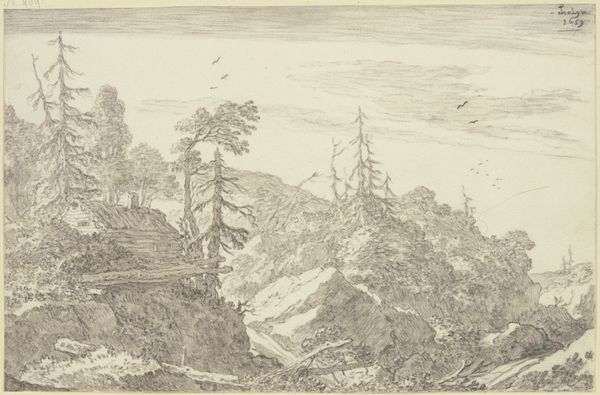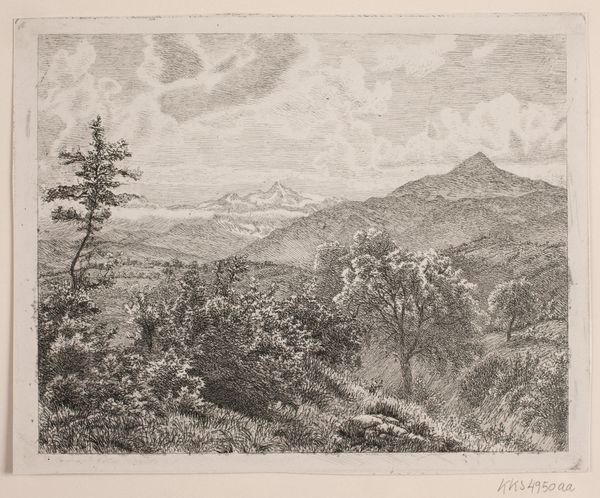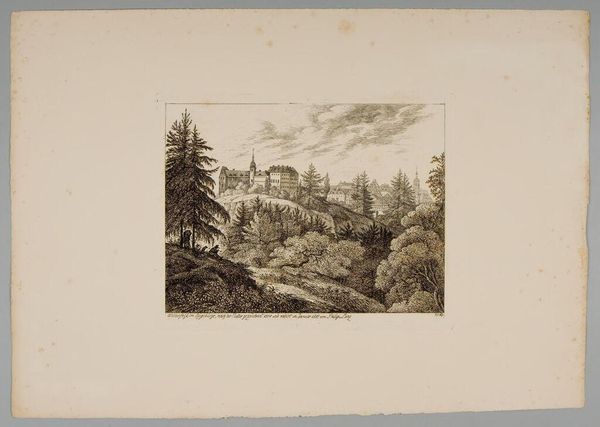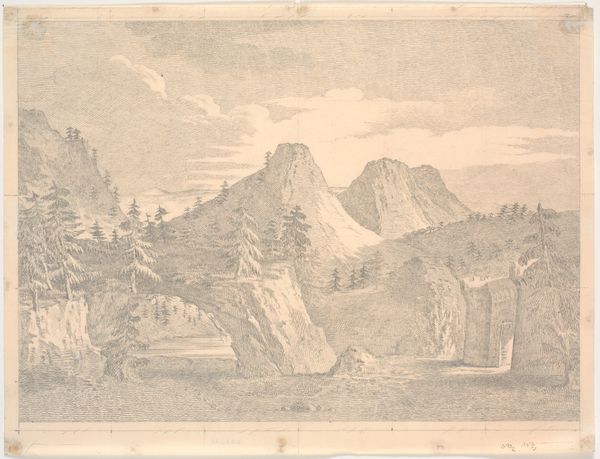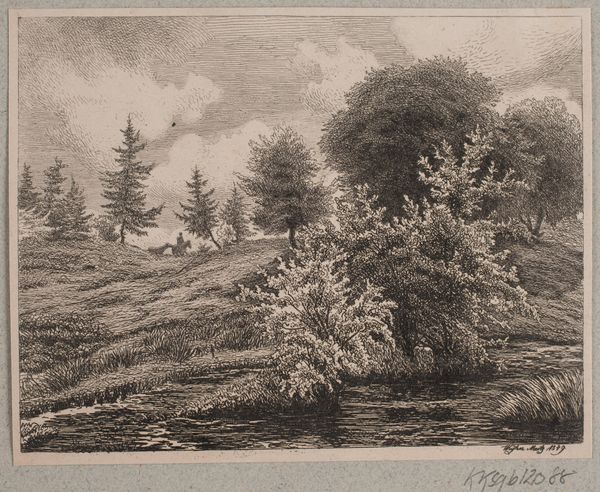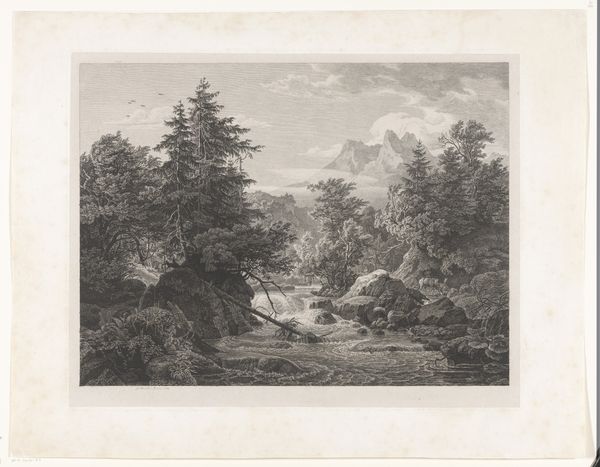
print, etching
#
medieval
# print
#
etching
#
landscape
#
pencil drawing
#
romanticism
#
line
Dimensions: book: 36.5 x 25.4 x 0.9 cm (14 3/8 x 10 x 3/8 in.)
Copyright: National Gallery of Art: CC0 1.0
Editor: This is "Sammlung Radierter Blaetter von Nathe," a print created in 1808 by Christoph Nathe, using etching techniques. There's something quite serene about the landscape, but also a bit haunting with the ruins. What draws your eye when you look at this work? Curator: My immediate interest lies in understanding the material conditions that allowed for its production and reception. This etching is not merely a landscape, it's a commodity produced and circulated within a specific economic and social system. Editor: That's a very different approach from what I was expecting. Can you elaborate? Curator: Certainly. Consider the labor involved in creating this print: the mining of the metals for the plate, the artisan’s skill in applying the etching ground, the printing process itself. These are all tangible, material acts. And how does the distribution and consumption of prints like this shape our understanding of art and landscape? Was it for the elite? How did this impact what was being produced at the time? Editor: So you are focusing on the 'making' of the artwork and how that impacts its interpretation, rather than simply observing its aesthetic appeal. Curator: Precisely. The aesthetic appeal itself is constructed through this process. Notice how the etcher skillfully uses lines to suggest depth and texture. The technique elevates the natural scene but it is also constrained by the physical capabilities of the materials themselves. What's more, what meanings were ascribed to "nature" or "landscape" in 1808, and how were they wrapped up in contemporary socioeconomic trends? How might ideas about national identity or property play out here? Editor: I never considered the actual production process in so much detail. I was mostly focused on the imagery and Romantic style. It’s fascinating to consider art as a product of labor. Curator: By examining the material and historical contexts, we gain a richer understanding of the artwork. It stops being just a pretty picture.
Comments
No comments
Be the first to comment and join the conversation on the ultimate creative platform.



